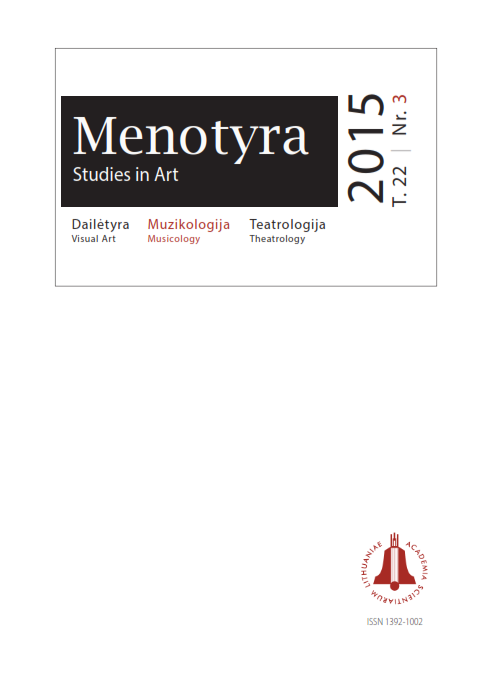M. K. Čiurlionio kūrybos retrospekcijos B. Kutavičiaus ir
V. Bartulio muzikoje
Retrospectives of M. K. Čiurlionis’ work in music by B. Kutavičius and V. Bartulis
Author(s): Rūta GaidamavičiūtėSubject(s): Fine Arts / Performing Arts, Music
Published by: Lietuvos mokslų akademijos leidykla
Keywords: M. K. Čiurlionis; B. Kutavičius; V. Bartulis; modern; postmodern; intertextual; constructive; emotional; “Aš” (the self ); “Kitas” (the other)
Summary/Abstract: The aim of the study is to reveal the differences in the attitudes to Čiurlionis’ creative work by the Lithuanian composers of two different generations – Bronius Kutavičius and Vidmantas Bartulis. The primacy of constructive or emotional relationship is demonstrated and the diffe- rences between modern and postmodern attitudes are studied with the help of analytical and comparative methods. However, this divide does not eliminate certain similarities. The period between the commemoration of Čiurlionis’ birth centenary in 1975 and the year 2005 is examined. Kutavičius’ “Dzūkiškos variacijos” (Dzukian Variations), Bartulis’ “Ūkanos” (Mist), “Hommage à Čiurlionis” and “Kelias” (The Way) are analysed. The reasons for late reception are studied, and the political and cultural conditions discussed. Establishing a national musical school, the composers (just like Čiurlionis himself ) stressed folk tradition for a long time; only later did they start to purposely build links with their predecessors. It is stated how with the passing of time it is possible to distance oneself from an idealised relationship, and the approach as if it were an icon has also changed. The possibility of a more relaxed communication is linked with the changing from general relationships to personal.The artist who creates an opus that has been greatly influenced by others does not necessarily draw on the “peaks”. It is possible that unresolved and unexpanded things, certain dead ends, or some collateral phenomena for which the genius simply had no time can be important for further expansion of art. Nevertheless, incorporated music is often employed as a sign and then the most characteristic works are drawn on.In cases of intertextuality, personal concurrence is rare and it imparts an additional dimension to other authors’ creative idea that is being expanded. With the increasing number of works marked by in-texts, the listener is directed to search for them.In Čiurlionis’ case, we have a peculiar phenomenon as honouring this symbolic Lithuanian figure other composers draw on his painting and graphic works, textual legacy, his music, or his personality. In his “Dzūkiškos variacijos” (Dzukian Variations) for chamber orchestra, piano and tape, Kutavičius not only pays homage to Čiurlionis but also as though builds a solidarity link between folk art, Čiurlionis’ legacy and modern composing techniques. Meanwhile, in Bartuli’s “Kelias” for mixed choir, saxophone, percussion and tape, Čiurlionis exists as an imaginary dramatic personage and thus here we can speak about stylistic biographic intertextuality.
Journal: Menotyra
- Issue Year: 22/2015
- Issue No: 3
- Page Range: 249-265
- Page Count: 17
- Language: Lithuanian

